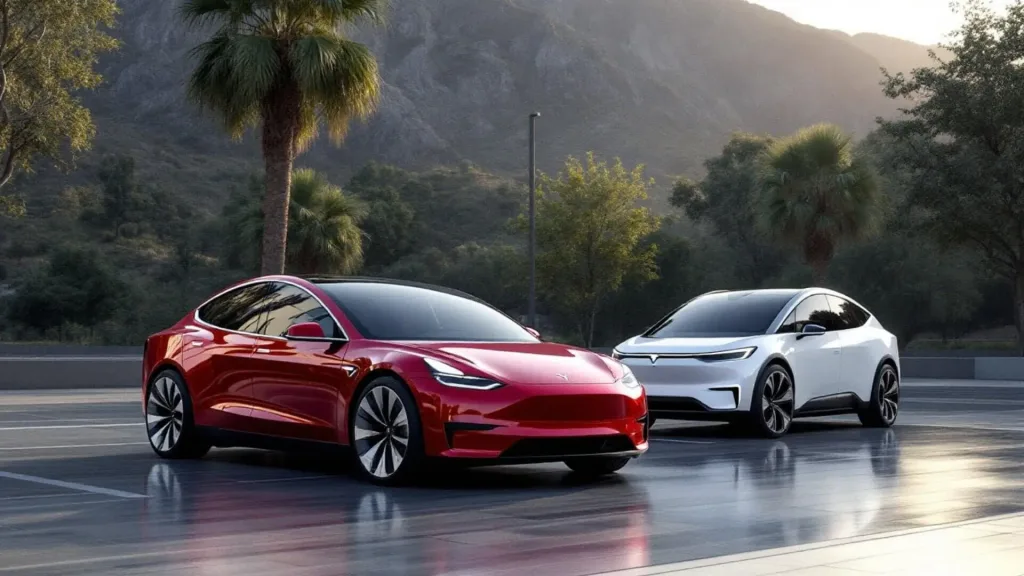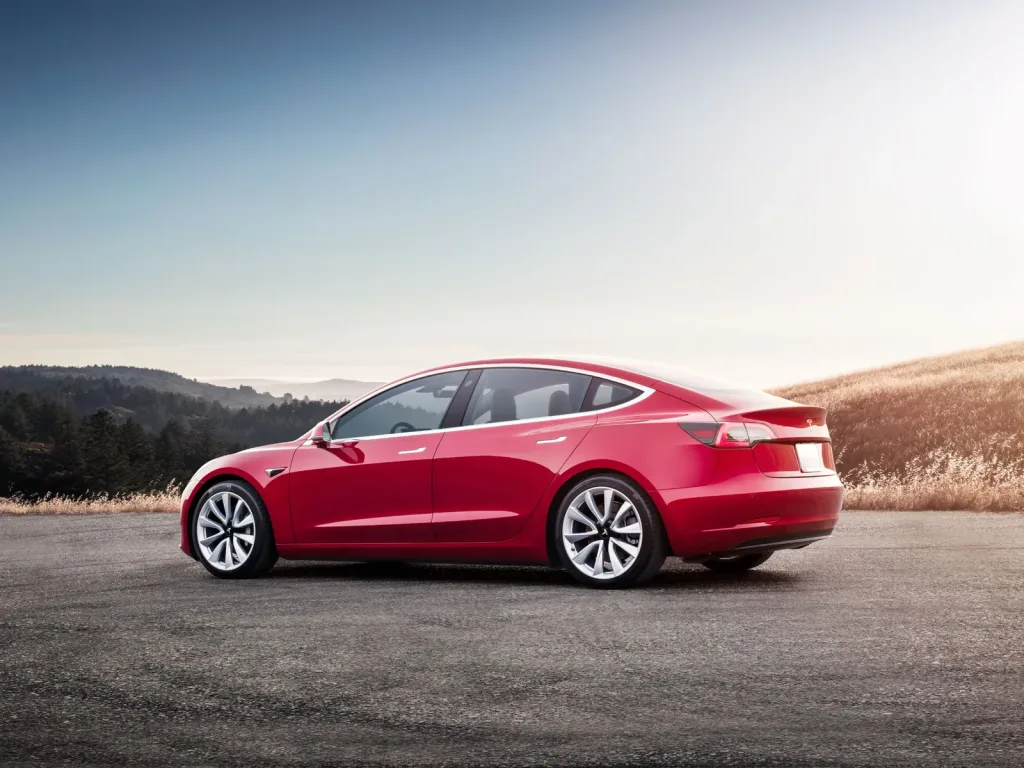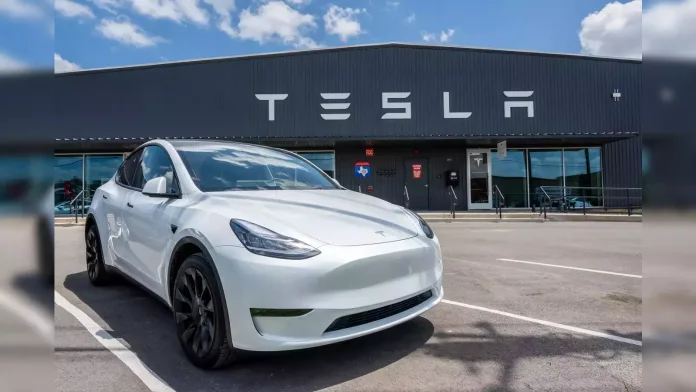The electric revolution in India is gaining momentum, but at a pace that might surprise global observers. Despite ambitious government targets and growing environmental awareness, electric vehicles currently represent just 7.47% of India’s automotive market. This figure, while showing growth from 6.38% in 2023, illustrates both the challenges and opportunities that lie ahead for companies like Tesla looking to enter this complex market.
“I’ve been watching the EV space in India for years,” says Rajesh Kumar, a 42-year-old IT professional from Bangalore. “The interest is definitely there, but for most middle-class families like mine, the initial cost remains a significant barrier. We’re waiting for more affordable options with better infrastructure.”
Rajesh’s perspective reflects the sentiment of many Indian consumers – interested but cautious. This cautious approach has resulted in a market that sold approximately 2 million electric vehicles in 2024, an impressive 27% growth from the previous year, but still a fraction of the country’s overall automotive sales.
EV Market Segmentation in India (2024)
| Segment | Units Sold | Market Share | YoY Growth |
|---|---|---|---|
| Electric Two-wheelers | 1,148,575 | 59% | 33% |
| Electric Three-wheelers | 691,323 | 35% | 18% |
| Electric Passenger Vehicles | 99,068 | 5% | 20% |
| Electric Commercial Vehicles | 10,038 | 0.5% | 100% |
The data reveals a critical insight: while the overall EV market is growing, passenger vehicles (the segment where Tesla would compete) represent just 5% of total EV sales. This creates both a challenge and an opportunity for the company’s entry strategy.
India Tesla Showroom Plans Reveal Serious Market Intent
After years of speculation and negotiations, the company’s entry into India is finally taking concrete shape. The company has secured a five-year lease for a showroom in Mumbai, with plans for a second location in Delhi. This move signals Tesla’s serious intent to establish a presence in what could become one of the world’s largest EV markets.
India Tesla showrooms will serve as more than just sales centers – they’ll function as brand experience hubs where potential customers can interact with the technology that has made Tesla a global phenomenon. For many Indians, these showrooms will provide their first hands-on experience with Tesla vehicles.
“The showroom strategy makes perfect sense as a first step,” explains Priya Sharma, an automotive industry analyst. “Tesla needs to build brand awareness and gauge consumer response before committing to larger investments. The India Tesla relationship has been developing for years, with multiple discussions between the company and government officials about potential entry terms.”
The company’s initial approach differs significantly from its strategy in markets like China, where it quickly established local manufacturing. For India, the company plans to import completely built units (CBUs) while assessing market potential – a more cautious approach that reflects the unique challenges of the Indian market.

Tesla India Price Concerns: Affordability in a Price-Sensitive Market
Perhaps the most significant hurdle for the company’s success in India lies in pricing. The expected Tesla India price range positions the vehicles in the luxury segment, with the Model 3 potentially starting around ₹30 lakh (approximately $40,000). This places Tesla vehicles well above the ₹10-20 lakh range where most Indian EVs are currently priced.
Anand Kulkarni, a potential EV buyer from Mumbai, expresses a common concern: “I’ve been following Tesla for years and would love to own one. But at that price point, especially with import duties, it becomes difficult to justify compared to local options that are half the cost.”
Analysts suggest that Tesla India price points will need to be reconsidered for mass market adoption in this price-sensitive region. The company faces a delicate balancing act – maintaining its premium brand positioning while finding ways to make its vehicles more accessible to Indian consumers.
Price Comparison: Tesla vs. Indian EV Market Leaders
| Vehicle Model | Expected Price Range (₹) | Range (km) | Segment |
|---|---|---|---|
| Tesla Model 3 (Imported) | 30-40 lakh | 400-500 | Premium |
| Tata Nexon EV | 14-19 lakh | 300-450 | Mid-range |
| MG ZS EV | 21-25 lakh | 400-450 | Mid-premium |
| Mahindra XUV400 | 15-19 lakh | 350-450 | Mid-range |
The price differential highlights why the company might initially target affluent early adopters rather than competing for mass-market share. However, this strategy limits its potential impact on overall EV adoption in India.
Tesla India Manufacturing Strategy: Contract Production vs Direct Investment
To address the pricing challenge, Tesla is exploring innovative approaches to manufacturing in India. Reports suggest Tesla India manufacturing might begin with contract production through partnerships with established automakers, rather than immediate direct investment in facilities.
“Tesla’s approach to manufacturing in India shows they’re learning from past market entries,” notes Vikram Mehta, an automotive supply chain consultant. “Contract manufacturing allows them to reduce initial investment while benefiting from existing supplier networks and production expertise.”
The minimum investment requirement of $500 million for Tesla India manufacturing aligns with new government policies for EV makers. This substantial figure explains the company’s cautious, phased approach to the market.
For Tesla, the manufacturing question extends beyond cost considerations. The company must also consider:
- How to adapt vehicle designs for Indian road conditions and driving patterns
- Building a local supplier ecosystem for components and services
- Developing a service network capable of supporting its technology-intensive vehicles
- Balancing global quality standards with local cost constraints
The decisions the company makes regarding manufacturing will likely determine its long-term success in the Indian market.

India EV Market Competition: Local Players vs Global Entrants
The India EV market is currently dominated by domestic players, with Tata Motors holding over 60% share in the passenger vehicle segment. This home-field advantage for local manufacturers presents a significant challenge for Tesla.
Electric Passenger Vehicle Market Share (2024)
| Manufacturer | Units Sold | Market Share | YoY Growth |
|---|---|---|---|
| Tata Motors | 61,435 | 62% | -11% |
| JSW MG Motor | 21,464 | 21% | 125% |
| Mahindra & Mahindra | 7,104 | 7% | 66% |
| Others | 9,001 | 10% | – |
“Local manufacturers understand Indian consumer preferences and have established service networks,” explains Deepak Joshi, an automotive retail expert. “They’ve also adapted their vehicles specifically for Indian conditions – something Tesla will need to consider.”
Recent growth in the India EV market has been impressive, with a 27% year-over-year increase in total sales. This growth trajectory makes the market increasingly attractive for global players like Tesla, despite the strong position of domestic manufacturers.
The competitive landscape is set to become even more crowded, with over 12 new mass-market EVs expected to launch in 2025. This includes models from established players like Hyundai and Maruti Suzuki, further intensifying competition in the segment where the company would operate.
EV Adoption in India: Barriers and Growth Drivers
Current EV adoption in India stands at approximately 7.5% of total vehicle sales, showing steady growth from previous years. However, several factors continue to influence the pace of adoption:
Key Barriers to EV Adoption
- Limited Charging Infrastructure: With approximately 11,000 charging stations nationwide (compared to the projected need of 1.3 million by 2030), range anxiety remains a significant concern for potential buyers.
- High Initial Cost: Despite lower operating costs, the higher purchase price of EVs compared to internal combustion engine vehicles deters many budget-conscious consumers.
- Limited Model Options: The current market offers fewer EV models compared to traditional vehicles, limiting consumer choice.
- Battery Technology Concerns: Questions about battery life, replacement costs, and performance in extreme weather conditions create hesitation among potential buyers.
Growth Drivers for EV Adoption
- Government Incentives: The new EV policy offering reduced import duties for manufacturers willing to invest in local production could accelerate market development.
- Rising Fuel Costs: Increasing petrol and diesel prices make the operating cost advantage of EVs more compelling.
- Environmental Awareness: Growing concern about air pollution, particularly in urban areas, is driving interest in cleaner transportation options.
- Expanding Model Range: The anticipated launch of numerous new EV models in 2025 will provide more options for consumers across different price points.
Urban centers are leading EV adoption in India, with charging infrastructure concentrated in major metropolitan areas. This urban-rural divide presents both a challenge and an opportunity for companies entering the market.
Tesla India Launch Timeline: What We Know So Far
The Tesla India launch strategy appears to focus initially on imported vehicles while the company assesses market potential. While exact dates remain unconfirmed, industry sources suggest the following timeline:
- 2024-2025: Opening of showrooms in Mumbai and Delhi
- 2025: Beginning of vehicle imports under the CBU route
- 2025-2026: Potential contract manufacturing arrangements
- 2026-2027: Possible direct manufacturing investment if market response is positive
Industry experts predict the Tesla India launch could accelerate EV adoption among premium car buyers, creating a halo effect that benefits the broader EV ecosystem. The company’s entry could also spur infrastructure development, particularly in the charging network.
“Tesla’s entry will likely raise the bar for the entire industry,” says Anjali Desai, an electric mobility researcher. “Their focus on the entire ecosystem – from vehicles to charging infrastructure to energy generation – could help address some of the fundamental challenges facing EV adoption in India.”

The Future of Tesla in India: Challenges and Opportunities
The future of the company in India depends largely on government policies and the company’s willingness to invest in local manufacturing. While the challenges are significant, the potential rewards of successfully entering one of the world’s largest automotive markets are equally substantial.
Tesla in India faces significant challenges including high import duties, price sensitivity, and limited charging infrastructure. However, the company’s technological edge, brand appeal, and the government’s increasingly supportive stance toward EVs create a potentially viable path forward.
For the company, success in India will likely require:
- A tailored approach that adapts to local market conditions rather than simply importing its global strategy
- Strategic partnerships with local entities to navigate regulatory complexities
- Patience in building market share rather than expecting rapid adoption
- Investment in charging infrastructure to address one of the key barriers to EV adoption
- Eventually, localized manufacturing to achieve more competitive pricing
As Elon Musk himself noted in a social media post about the Indian market: “India has the potential to be one of the largest EV markets in the world in the long term, but we need to focus on making the economics work first.”
Also Read: Tata Nexon vs MG Windsor Comparison: Detailed Guide in 2025
Frequently Asked Questions
When will Tesla officially launch in India?
Tesla is expected to begin its official India operations with showroom openings in Mumbai and Delhi in 2024-2025. Vehicle imports are likely to follow shortly after, though exact dates have not been confirmed by the company.
What Tesla models will be available in India?
Initially, Tesla is expected to import the Model 3 and possibly the Model Y through the completely built unit (CBU) route. The company has not announced plans for India-specific models at this time.
How much will Tesla cars cost in India?
Due to import duties and taxes, Tesla vehicles will be positioned in the premium segment. The Model 3 is expected to be priced between ₹30-40 lakh, while the Model Y could cost ₹45-60 lakh. These prices may decrease if Tesla establishes local manufacturing.
Will Tesla build a factory in India?
Tesla is exploring various manufacturing options, including contract manufacturing with established automakers before committing to direct investment. Any manufacturing facility would likely require the minimum $500 million investment specified in the government’s new EV policy.
How does Tesla plan to address India’s charging infrastructure limitations?
While specific plans haven’t been announced, Tesla typically deploys its Supercharger network in markets where it operates. The company may initially focus on urban centers and key highway corridors connecting major cities.
Can Tesla compete with lower-priced domestic EV manufacturers?
In the short term, Tesla will likely position itself as a premium alternative rather than competing directly with lower-priced domestic options. Its target market will initially be affluent early adopters rather than mass-market consumers.
What impact will Tesla’s entry have on India’s EV market?
Tesla’s entry could accelerate EV adoption among premium buyers, raise consumer awareness about electric vehicles, and potentially pressure other manufacturers to improve their EV offerings. It may also catalyze improvements in charging infrastructure.
How does the Indian government’s EV policy affect Tesla?
The new EV policy announced in March 2024 potentially benefits Tesla by reducing import duties from 70% to 15% for companies willing to invest at least $500 million in local manufacturing. This policy change could significantly improve Tesla’s business case for entering the Indian market.
Conclusion: A Watershed Moment for India’s EV Journey
Tesla’s entry into India represents a potential watershed moment in the country’s electric vehicle journey. While the immediate impact may be limited to the premium segment, the long-term implications for technology adoption, infrastructure development, and market competition could be profound.
For Indian consumers, Tesla’s arrival offers both a glimpse of the future and a catalyst for change in the present. As Priya Sharma, the automotive analyst, puts it: “Tesla won’t transform India’s EV market overnight, but it will accelerate the conversation and raise expectations for what electric mobility can and should be.”
The road ahead for Tesla in India contains both obstacles and opportunities. The company’s success will depend not just on the quality of its vehicles but on its ability to adapt to the unique demands of the Indian market. For a company known for disrupting established industries, India presents perhaps its most complex challenge yet – and potentially one of its greatest opportunities.


